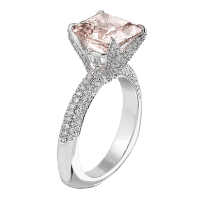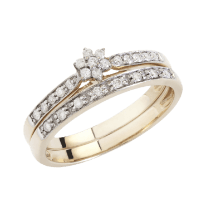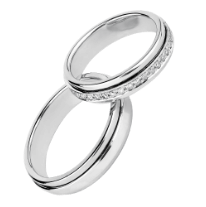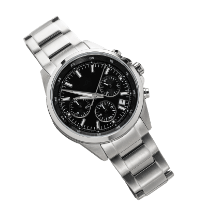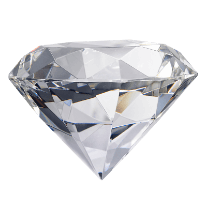The timeline of the diamond trade dates back to the 4th century BC, when rough diamonds were found along riverbeds in India. While the diamond industry is one of the most historically enduring markets, it has not been immune to evolution and change.
The latest development to shake up the diamond industry is the rapid growth in technology used to produce laboratory-grown diamonds. While the technology to produce lab diamonds has been around since the 1950s, the process used to manufacture synthetic diamonds has recently become more widespread and readily available. This has allowed lab diamonds to enter the diamond market space on a large scale for the first time.
Natural vs synthetic diamonds:
When talking about diamonds, the most common purchase is as an engagement ring.
Engagement rings are more than just a commercial transaction. They are a gift of considerable value and beauty that represents the love of the relationship and the commitment to spend the rest of the couple’s lives together. The gift is not valued by the recipient in a dollar figure but by the thought, emotional connection and physical manifestation of their love.
While many engagement ring recipients may not be interested or even care about the monetary value of the diamond, the known value that a natural diamond holds is what makes it so valuable and sought after as a gift of love. While synthetic diamonds do have the same physical appearance to the naked eye, they do not hold the same monetary value, and as manufacturing techniques continue to be refined, the prices of synthetic diamonds will most likely continue to fall.
Laboratory-grown diamonds are being marketed to consumers as being sustainable, affordable and free from conflict. They are being marketed as a substitute for a natural diamond, and while they are chemically identical, the decision to purchase a synthetic must be made by the consumer with full knowledge that what they are purchasing is not a real diamond and will not hold the same value due to scarcity for years and decades to come.
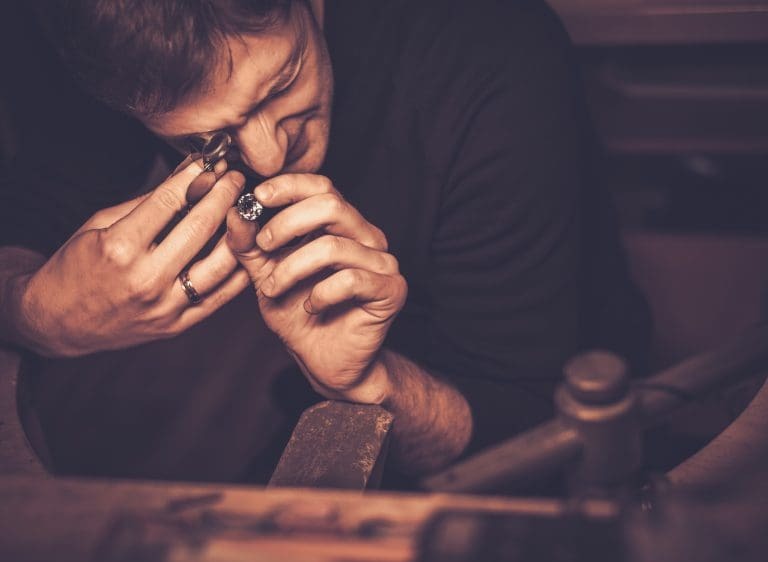
Why is there concern about lab-grown diamonds?
Jewellers and diamond wholesalers are concerned about synthetic diamonds entering the jewellery market, as they threaten to destabilise the well-established natural diamond market pricing structure.
Many jewellers have steered clear altogether, arguing that synthetic diamonds are not suitable for the emotional purchase of an engagement ring. These jewellers firmly believe diamonds should symbolise something rare and cherished and that this ideology is not quite conveyed by something manufactured in a laboratory.
On the other hand, jewellery companies such as the diamond giant DeBeers have taken the front foot with the issue, attempting to create a clear distinction between the two products. DeBeers have released a budget-friendly line of synthetic diamond jewellery named “Lightbox” which makes a clear statement that natural and lab-grown diamonds do not belong in the same market.
Know the difference
The only surefire way to know what you are getting when it comes to lab-grown or natural diamonds is to make sure any diamonds you have purchased is graded so that you know exactly what you are paying for. There have been reports of natural diamonds being found in packets of synthetic diamonds and vice versa. If you are paying the premium for a natural diamond, then that is the product you are expecting to receive. The only way you can know for certain is to have a stone that has been graded by a certified diamond laboratory such as GIA.

How are lab-grown diamonds made?
Synthetic-grown diamonds are those formed in a factory or laboratory setting. Unlike natural diamonds (read about how natural diamonds are formed here), lab diamonds are grown over a short period of time – usually a few weeks to one month. Despite some confusion, lab-grown diamonds are not an imitation of cubic zirconia or moissanite, as they are chemically and physically identical to a natural diamond.
Lab diamonds used in the jewellery industry are typically formed via one of two methods, High Pressure, High Temperature (HPHT) or Chemical Vapour Deposition (CVD). HPHT imitates the conditions in that natural diamonds are formed, whereas CVD involves growing a diamond layer by layer in a chamber filled with ionised gas.
Advanced chemical testing is required to distinguish a diamond formed via HPHT or CVD from a natural diamond. Standard gem testing equipment such as a refractometer, UV fluorescence lamp, binocular microscope and polariscopes are used to identify lab-grown diamonds.
A diamond worth:
At the end of the day, consumers will make their own decisions on whether to purchase a synthetic diamond as a substitute for a natural diamond. The scarcity of natural diamonds and the value that they hold will not be diminished by synthetic diamonds, as the two are separate markets. Concerns around the mixing of natural and synthetic stones in the sorting process mean that jewellers and consumers should only place more importance on primary stones only being certified by a reputable grading lab such as GIA. This is to protect both the consumer from unknowingly purchasing a synthetic as well as the reputation of a jeweller who may sell an uncertified diamond that turns out to be synthetic.
The debate over synthetic vs natural diamonds is one that will continue to divide both the industry and consumers for years to come. While the majority see the value of natural diamonds and the beauty that they hold, synthetic diamonds are here to stay and will continue to integrate into the mainstream diamond market over time.

